Art World
The Enduring Allure of Surrealist Leonor Fini
As Surrealism's centennial nears, its dark star Leonor Fini's legend is peaking. Her life was as idiosyncratic as her daring, sensuous work.
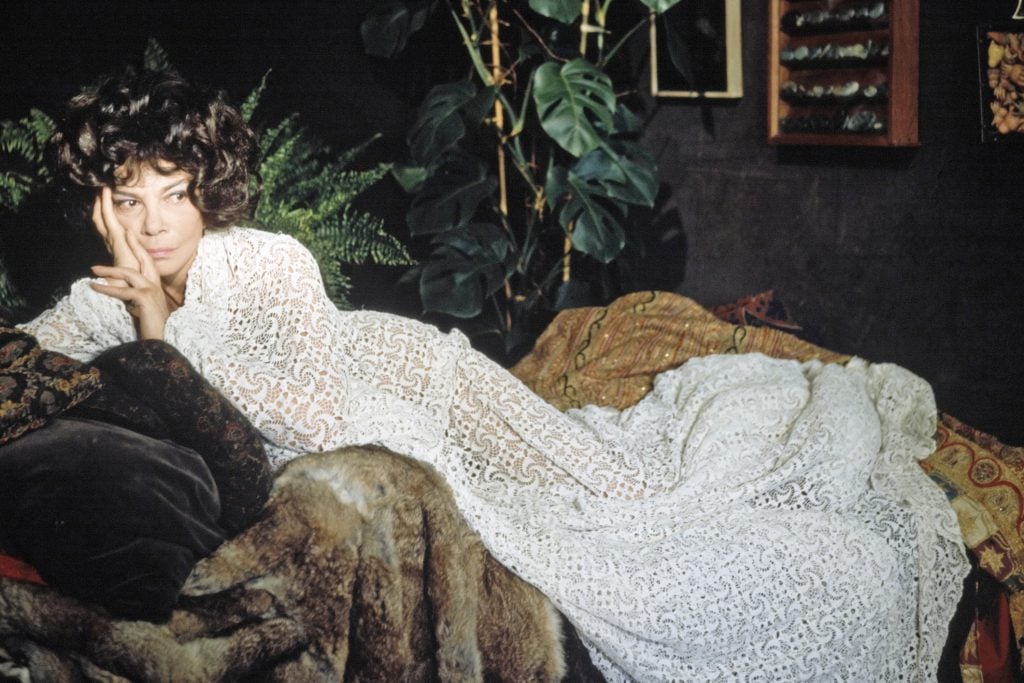
On the 100th anniversary of Surrealism, Leonor Fini, the Surrealist woman artist, is finally getting the recognition she deserves. But by her own measure, Fini was neither a Surrealist, nor was she even a woman artist.
“She wanted to identify as an independent artist,” said the Parisian gallerist Arlette Souhami. “’I am an artist,’ she would say. ‘Not a woman artist, not a man artist, but an artist.’ She refused to show in exhibitions composed of female artists. She hated extremists of any kind. She did not want to be associated with any specific group, be they women, or Surrealists, or whomever else.” Souhami was Fini’s friend and art dealer of almost 20 years and attributes her underappreciation by the art world to her insistence on nonalignment.
“Leonor was highly intelligent,” she said, “but very difficult.”
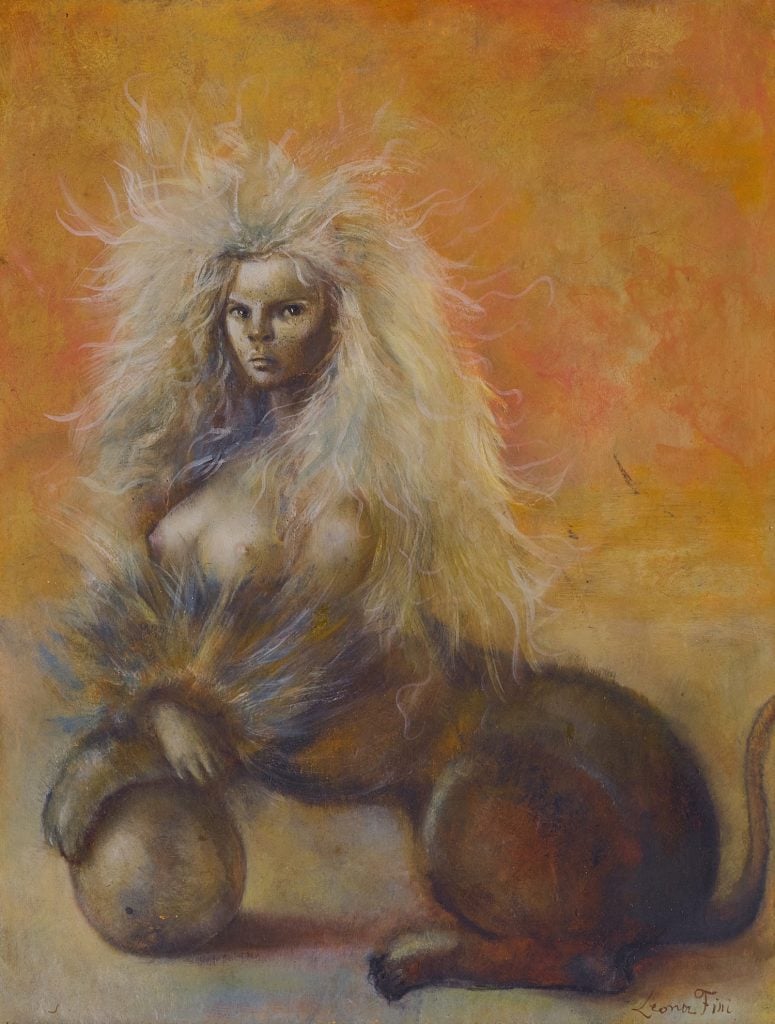
Leonor Fini, Sphinx pour David Barrett (1954). Image courtesy of Sotheby’s.
Fini (1907-1996) eschewed categorization. She delved into the natural and the supernatural through a multi-disciplinary practice (through the lens of an haute-couture witch). Her diverse career spanned 70 years. She marked her artworld debut at the age of 22 with her first solo exhibition in Milan in 1929. Yet, the sensual mythologies she explored in her Surrealist paintings are resonating today more than ever.
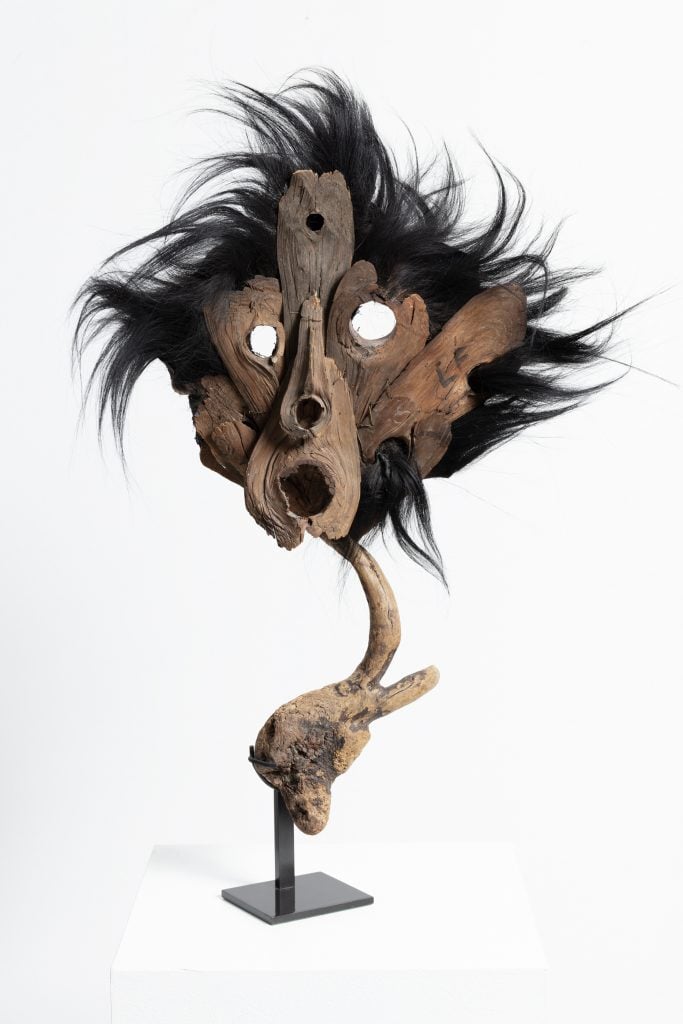
Leonor Fini, M5 Black Scarecrow mask, c. 1960, black thick felt fabric and driftwood tree branch (found in Corsica). Courtesy of Galerie Minsky and Kasmin, New York.
Fini was featured in the 2022 Venice Biennale, which headlined female surrealists, but didn’t get as much of a profile boost compared to her comrade Leonora Carrington, who coined the exhibition title, “The Milk of Dreams.” Kasmin gallery hosted “Metamorphosis,” a revelatory solo exhibition last year that combined Fini’s paintings, drawings, sculpture, and costumes, further exposing the audiences to her phantasmagorical allure. Kasmin’s president Nick Olney believes the surge of renewed interest in her work will continue.
“Leonor has been under-seen in the U.S for many years,” he said. “Her work is so multifarious and strong. So much of the dominant conversation of the second half of the 20th century was steering towards aesthetic and conceptual purity, by not treating art that had elements of emotion or magic as serious contemporary work. There is a greater openness now to that kind of power in art, and to truly multidisciplinary artists.”
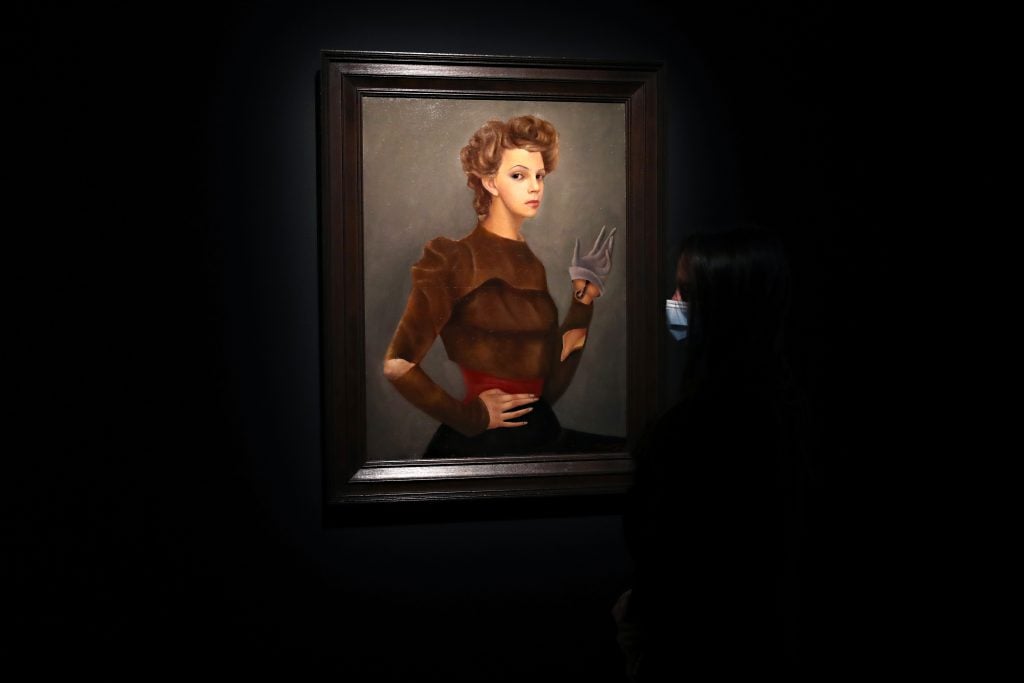
Leonor Fini, Autoportrait au scorpion on display during Sotheby’s NY press preview of the Impressionist and Modern Art Evening Sale at Sotheby’s on May 03, 2021 in New York City. (Photo by Cindy Ord/Getty Images)
Fini reached a market high in 2021 when her austere self-portrait showing a scorpion emerging from her dainty glove sold for three times its estimate at Sotheby’s for $2.3 million. She now has a painting on display at Imagine!, the centennial review of surrealist art at the Royal Museum of Fine Arts in Belgium opening this week.
A prime articulation of her surrealist oeuvre is Chthonian Deity Watching over the Sleep of a Young Man (1946). A shadow-black sphinx, Fini’s signature avatar and vessel for feminine divinity, looms over a slumbering man, her gaze downcast at his supple body, naked except for a swath of pink fabric. An expression on the demigoddess’s face suggests she is contemplating her ward’s beauty—or, rather, considering swallowing him whole. The exposed boy does not appear entirely unaware of his likely fate. Perhaps he invites it? The depiction is a role reversal of the period’s sexual dynamics – here, man is muse and snack, woman holds power.
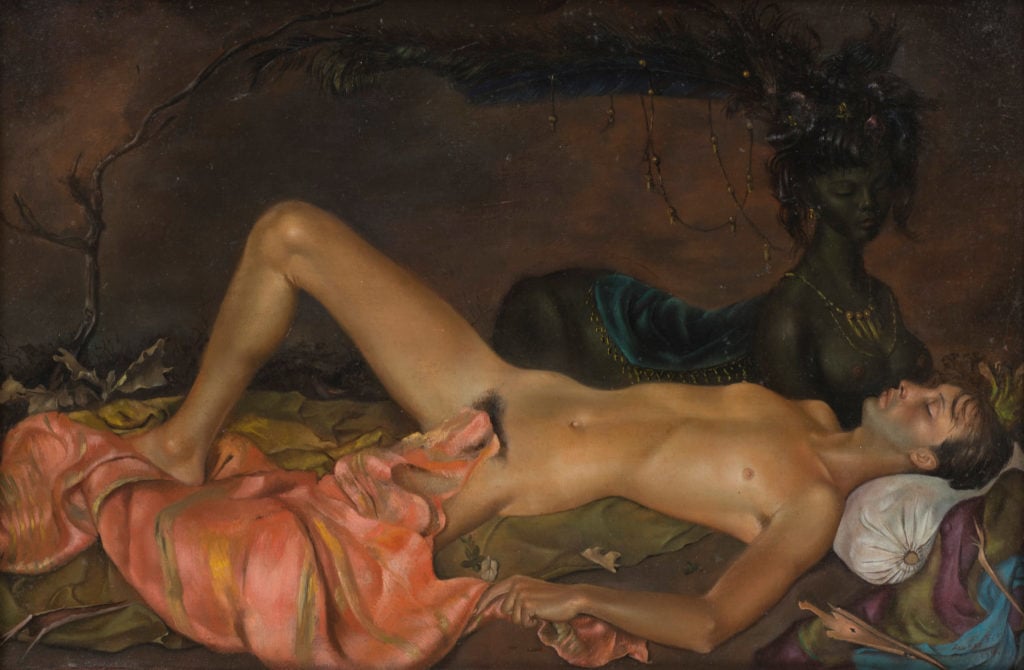
Leonor Fini, Chtonian Deity Watching over the Sleep of a Young Man (1946). © Weinstein Gallery, San Francisco and Francis Naumann Gallery, New York / VG Bild-Kunst, Bonn 2020
Despite her growing popularity as a self-taught artist, her relationship with Surrealism was complicated. Surrealism coalesced in 1924 when a band of male European artists united to sign the Surrealist Manifesto. Fini became acquainted with the movement’s members around a decade later once they took interest in her work. On their very first meeting, Fini arrived at the café rendezvous dressed in the scarlet robes of a Catholic cardinal. She said she wanted to know how it felt to wear the clothes of a man who would never know a woman’s body. She became an overnight sensation.
Her biographer Desmond Morris, considers Fini an “antagonistic surrealist” – an artist who produced surrealist work while polemically rejecting the official movement’s leader, André Breton, along with his ideals. Fini refused to sign the group’s charters, repulsed by Breton’s authoritarianism as well as the very notion of treatises and manifestos, which she viewed as symptomatic of a “petit bourgeois” mentality.
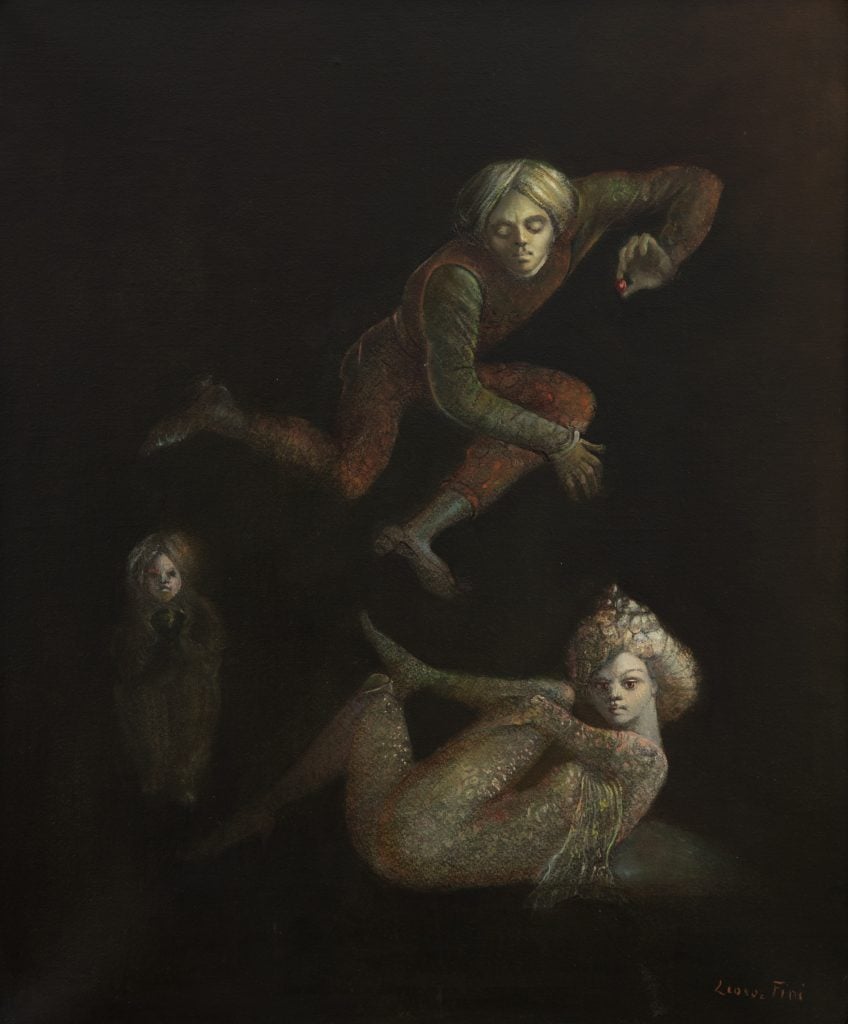
Leonor Fini, Mise en garde ( ̈Petites enseignes pour la Nuit VI), 1982. Courtesy of Galerie Minsky and Kasmin, New York.
Even as an independent, she remained friends with many of Paris’s great artists. French poet Jean Genet was one of them. In his first foray into art criticism, he published a letter to Fini accusing the painter of withholding. “You seem to me on the edge of metamorphosis,” he wrote. “Stop the game of appearances: appear.” He elaborated that following his advice might make her “worthy of being presented in that tiny room in the Louvre where they hang two portraits by Dürer.”
Though Fini’s art explored the erotic with an occult fascination, toying with the immemorial power struggle of the feminine versus the masculine, she categorically rejected the idea that she should be admired or appreciated as a woman artist. “They harass me like flies,” she said, “I find all these feminists grotesque.”
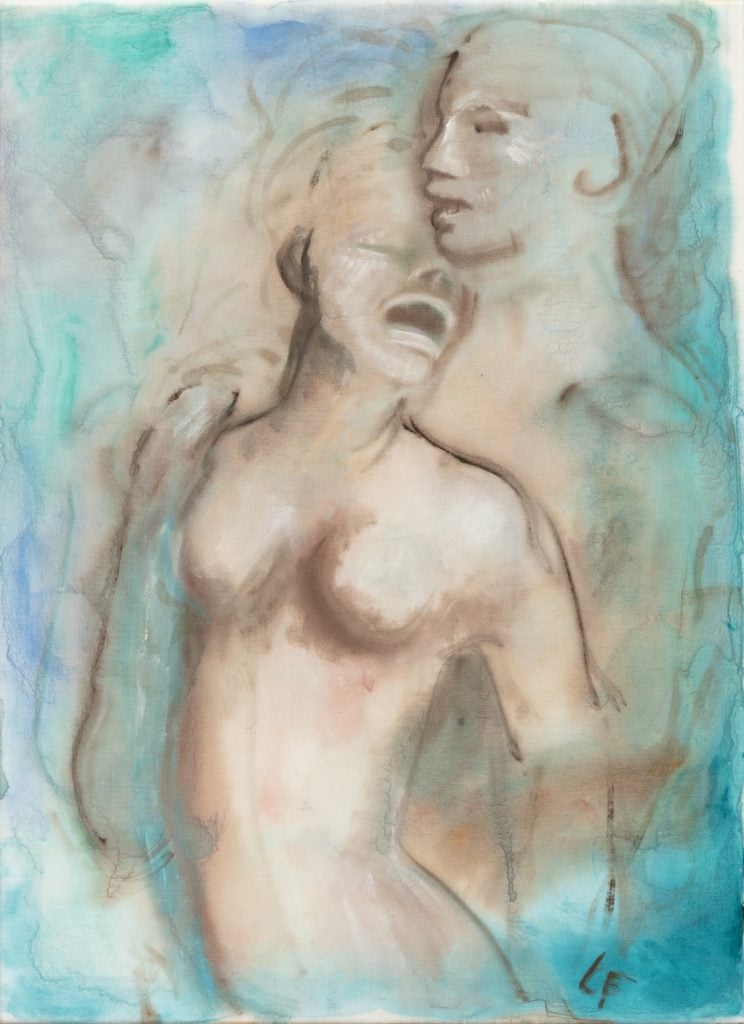
Leonor Fini, Hero et Léandre,1968. Courtesy of Galerie Minsky and Kasmin, New York.
The night they met in 1978, Souhami says Fini turned to her and said “I warn you, you’re cute, but I do not like women.” Souhami retorted “Well neither do I.” She describes the artist as highly feminine, and formidably free, living in a long-term polyamorous relationship with her two male lovers and her 23 cats. The felines were known to have full access to dinner-party tables, winding between guests and partaking of the food. Guests never dared to shoo one away, afraid of incurring Fini’s wrath.
Much of this can be explained by Fini’s extremely unconventional childhood. Her mother absconded with Fini from Argentina to Italy, escaping her tyrannical husband. Fini’s father sent hired henchmen to retrieve her, though the attempts were foiled. Desperate for safety, her mother fled further to the south of Italy where she reimagined her daughter into a son. For six years, to protect her identity, Fini lived and dressed as a boy whenever out in public.
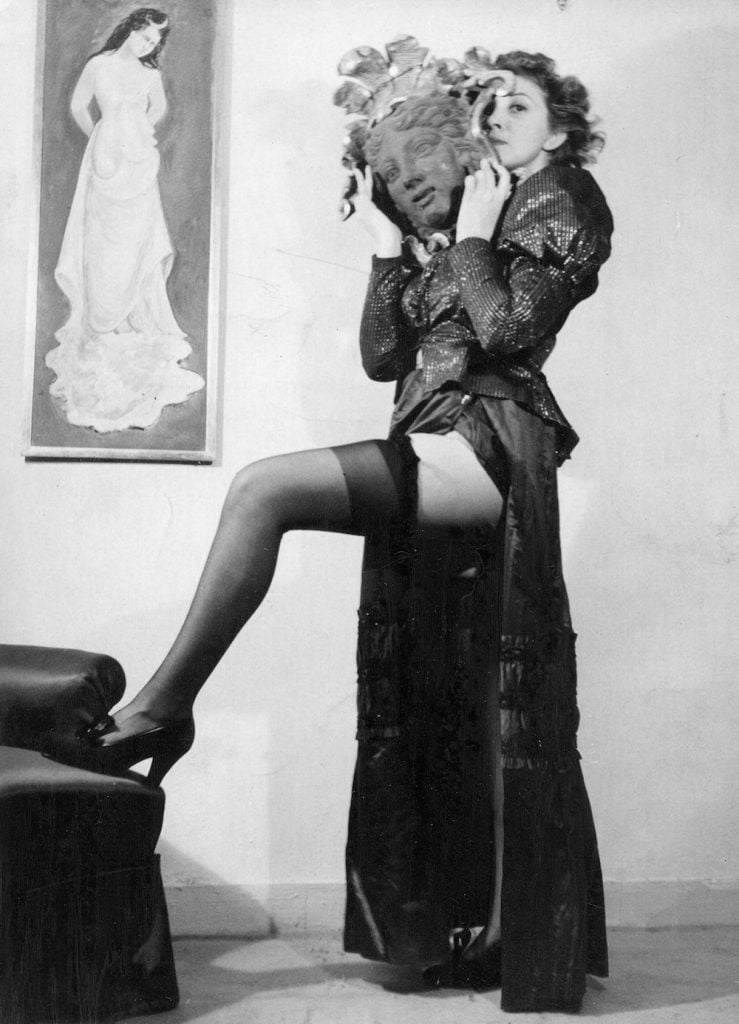
Portrait of artist Leonor Fini. Courtesy of Galerie Minsky and Kasmin, New York.
This period of her life might relate to her insistence on disassociation—to see the prospect of a fixed self as dangerous. Perhaps it also explains her passion for dressing up. She was known to wear extravagant high-fashion gowns, entirely impractical for painting, while working in her studio. In the ‘40s, she was regularly in magazine gossip columns for the looks she made and wore to costume parties, conflating art and life by often dressing like the chimeras in her work, particularly bird and cat hybrids. Much like her compatriot Frida Kahlo, Fini also had a penchant for cross-dressing.
In an interview with Peter Webb, art historian and author of Sphinx: the Life and Art of Leonor Fini, she notably stated, “I am fascinated by the androgyne, for it seems to me to be the ideal. It unites the thinking aspect of the male with the imaginative side of the female. I would like to think of myself as androgynous.”
Among her many other accomplishments, Fini illustrated the erotic novel Juliette by the Marquis de Sade and designed Elsa Schiaparelli’s iconic Shocking perfume bottle (shaped after Mae West’s torso). Fini also designed eccentric furniture, as well as outlandish costumes for film and theater. But her art makes her supernaturally eternal.
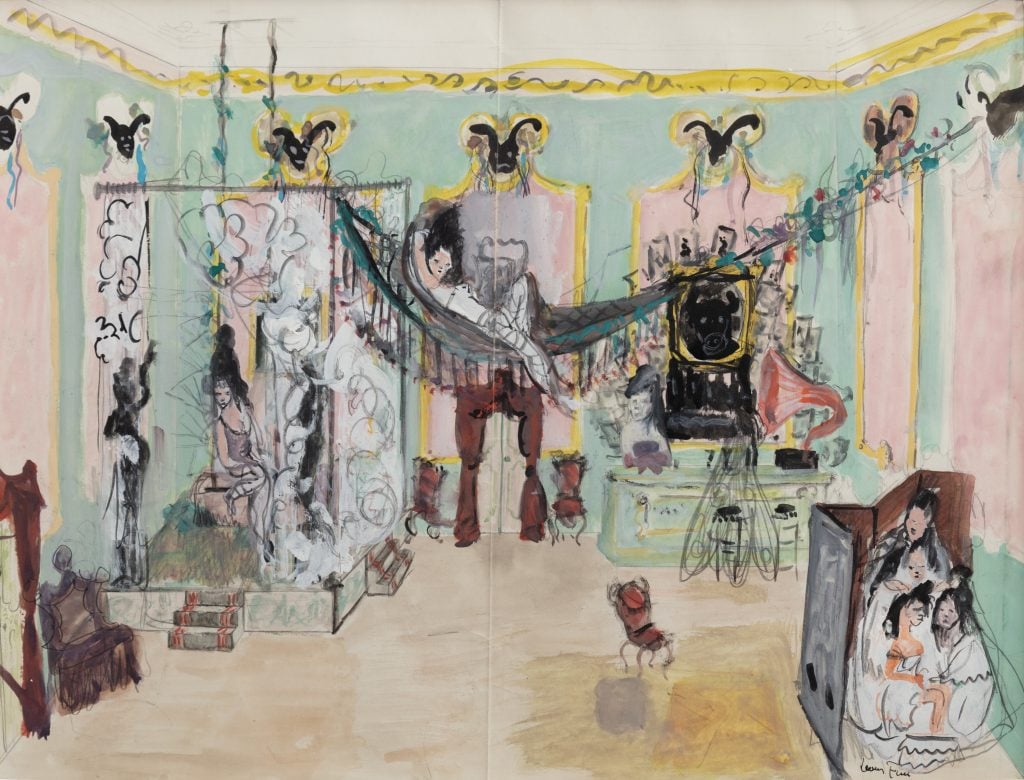
Leonor Fini, Le Ballet des Insectes, 1960-1965. Courtesy of Galerie Minsky and Kasmin, New York.
A century on, Fini’s work resounds as a beacon in a world that does not make sense. “In times of paradigm shift, when we grapple with fears of the present and the future,” Olney said, “when we deal with major change in the world, surrealism lets us reimagine how the world can be,” he says. “It is about the iconoclastic breaking down of what is being told to us and what is being dictated by greater forces.”





